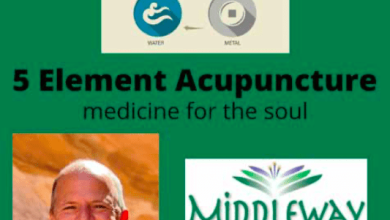Holistic Medicine
When we speak of holistic medicine, we often talk of the interconnectivity of the body with the mind, emotions and spirit. This is a sort of generic definition that risks watering down the power of a truly integrative medicine. Though Chinese medicine is often thought of as holistic, in many cases it is often plugged into a more western, linear model of treatment. For instance, I am often asked, “what is the point you use for a headache.” The answer is that it depends on the nature and location of the headache and the season. Perhaps more importantly the answer is determined by the person’s elemental constitution and the initial wound that caused them to lose faith in the goodness inherent in life. Acupuncture is too often seen as a sort of light switch that is used to turn on one specific light. It is an extreme oversimplification of a very elaborate medicine. Each point has its own particular wisdom. For instance, there is a point on the Gall Bladder meridian located on the lateral side of the ankle, known as “wilderness mound.” In the standardized form of Chinese medicine, known as Traditional Chinese Medicine (TCM), it can be used to treat ankle problems, headaches, acid reflux and chest pain. In the holistic five element system of Chinese medicine, the wilderness mound is where a person climbs to gain perspective when they are “lost in the woods.” So we use this point to help with finding direction when they are feeling lost. When someone is stressed because they can’t find their way, they may experience this stress physically as a headache. It is the same point, but used in a different manner, with a different intention. When used in this way, acupuncture can catalyze profound change in a person’s life. Not only does it treat pain, it helps a person continue forward towards their soul’s highest, truest expression. Years ago, when I first began practicing, I would treat a pattern with the typical tools of traditional Chinese medicine: acupuncture, herbs, massage, diet and some lifestyle recommendations. People would typically get better, but the condition would often return. Without properly addressing the emotional and spiritual aspects of a person; without working at the deepest levels of transformation, a person’s healing would often be temporary. We would flip the light switch and they would feel better for a while, only to have their pattern resurface. I have found the five element system of acupuncture to be much more effective at helping people discover how and why they continue to self sabotage, and repeat the same old stories and habits that create their disease patterns. When we work closer to the source of a pattern, at the level of a person’s constitution and their initial wound, we help a person discover their own path to healing. We uncover what is truly responsible for their suffering, and illuminate the best possible ways to move forward.
Clark Zimmerman practices 5 element acupuncture at Middleway Medicine in Talent, Oregon.


